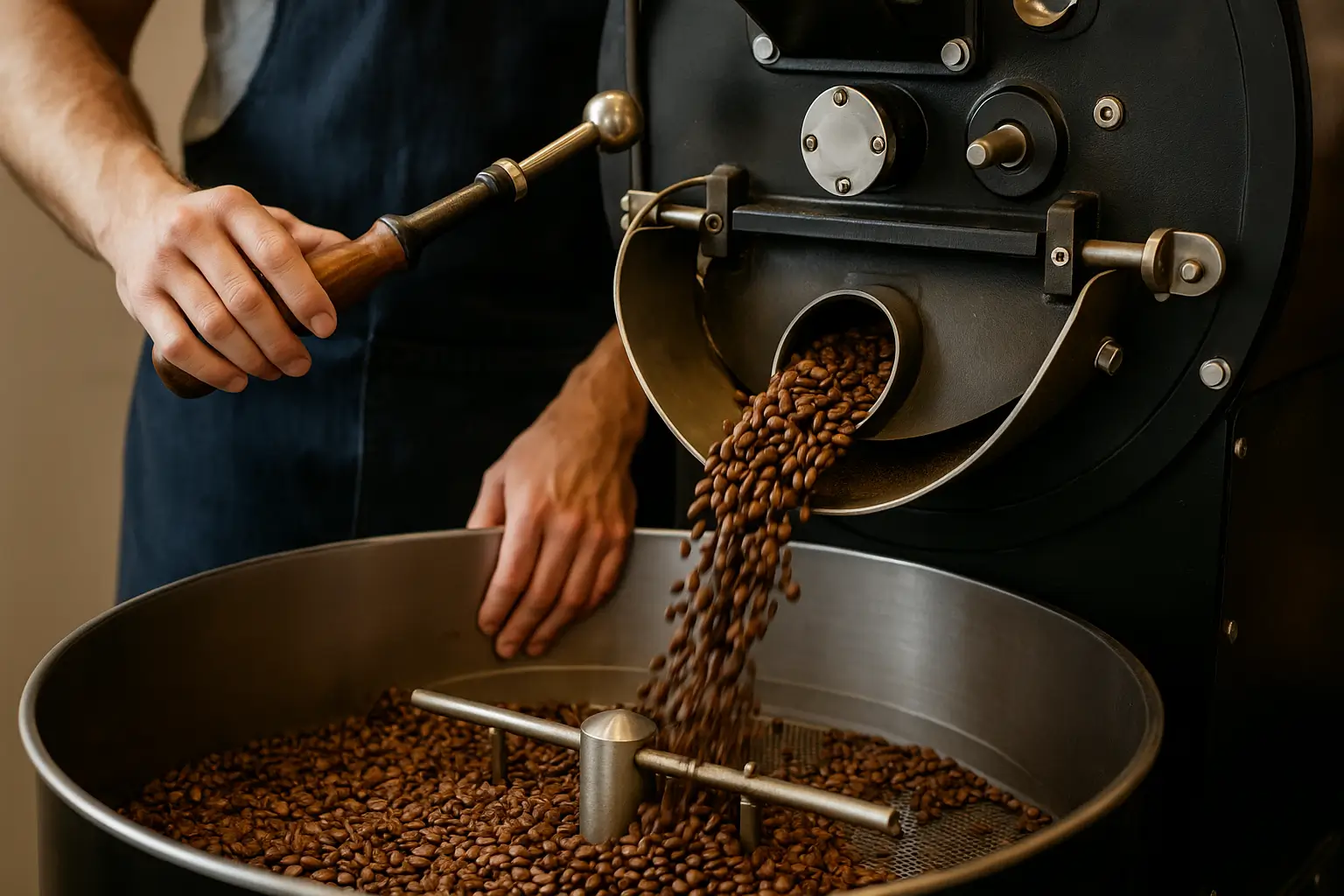Behind every great cup of coffee is a fascinating transformation process—roasting. Coffee roasting is both an art and a science, involving complex chemical reactions that unlock the flavors and aromas we associate with our favorite brews. In this article, we’ll explore the scientific journey of coffee beans from their raw, green state to the richly aromatic brown beans that make your morning cup so satisfying.
What Is Coffee Roasting?
Roasting is the process of applying heat to green coffee beans to bring out their unique flavors and aromas. Raw coffee beans are dense, pale green, and grassy in smell. It’s through roasting that they develop the flavors of chocolate, fruit, spice, caramel, and more.
The Three Stages of Roasting
Roasting typically progresses through three main stages:
1. Drying Phase
- Temperature range: 300–320°F (150–160°C)
- Moisture inside the beans begins to evaporate.
- Beans turn from green to yellow and emit a grassy aroma.
2. Browning Phase
- Temperature range: 320–390°F (160–200°C)
- Maillard reaction occurs: sugars and amino acids react, creating flavor and color.
- Coffee begins to develop complex aroma compounds.
- Ends with the “first crack,” an audible popping sound as beans expand and release steam.
3. Development Phase (Roasting Phase)
- Temperature range: 390–450°F (200–230°C)
- Roast profile is adjusted to balance acidity, sweetness, and bitterness.
- “Second crack” may occur in darker roasts—indicates cellular breakdown and oil migration.
Key Chemical Reactions in Roasting
1. Maillard Reaction
- A reaction between sugars and amino acids.
- Responsible for brown color and roasted flavor.
- Starts around 302°F (150°C).
2. Caramelization
- Sugars break down and create sweet, toasty notes.
- Occurs at higher temperatures (~338°F or 170°C and above).
3. Pyrolysis
- The decomposition of organic materials due to high heat.
- Produces volatile aromatic compounds.
- Gives coffee its characteristic roasted scent.
Light vs. Dark Roasts: What Changes?
| Roast Level | Flavor Profile | Acidity | Body | Color |
|---|---|---|---|---|
| Light | Fruity, Floral | High | Light | Light Brown |
| Medium | Balanced | Moderate | Medium | Medium Brown |
| Dark | Smoky, Bitter | Low | Heavy | Dark Brown to Black |
As beans roast longer, they lose acidity and develop deeper, smokier notes, with increased body and bitterness.
How Roasting Affects Caffeine Content
Contrary to popular belief, light roasts generally retain slightly more caffeine than dark roasts. This is because the longer roasting times of dark roasts cause greater breakdown of some caffeine molecules.
However, because dark roasts are less dense, measuring coffee by volume (e.g., scoops) gives you more caffeine with a dark roast, while measuring by weight favors light roasts.
The Role of the Roast Master
A roast master monitors the time, temperature, color, and aroma throughout the roasting process. They decide when to stop the roast based on desired flavor outcomes, using:
- Color changes
- First and second crack timing
- Smell and smoke levels
- Agtron color scales or visual inspection
Home Roasting: Is It Possible?
Yes! Home roasting is growing in popularity. Methods include:
- Air poppers
- Drum roasters
- Stovetop popcorn poppers
- Oven roasting (less consistent)
Tips for Home Roasting:
- Roast in a well-ventilated area
- Use high-quality green beans
- Keep records of time and temperature
- Allow beans to degas for 12–24 hours before brewing
Environmental and Ethical Considerations
- Roasting produces carbon emissions—opt for roasters that use cleaner technologies.
- Buy from brands that invest in sustainable practices and fair trade sourcing.
Final Sip
Roasting is the pivotal moment when a humble green bean becomes the flavorful foundation of your coffee ritual. Understanding the science behind it adds a whole new level of appreciation for your daily cup.
Next time you sip, think about the chemical alchemy, heat management, and craftsmanship behind each roast. It’s more than heat—it’s heart, history, and a hint of science in every brew.
